#6
WINGFOIL:
GETTING ON THE
WATER WITH YOUR
EQUIPMENT
Quelle planche de wingfoil choisir :
Rigide ou gonflable ?
Carrying your wingfoil gear to the water and launching isn’t as complicated as you might think, especially if you follow proper protocol. Although the TAHE wing is lightweight, it’s important to know how to manage the wind, take pressure off your wing, and correctly position your board, without tiring yourself out before you’ve even begin. Launching your wingfoil is an important moment, and there are rules to respect to avoid injuring yourself or others with your foil.
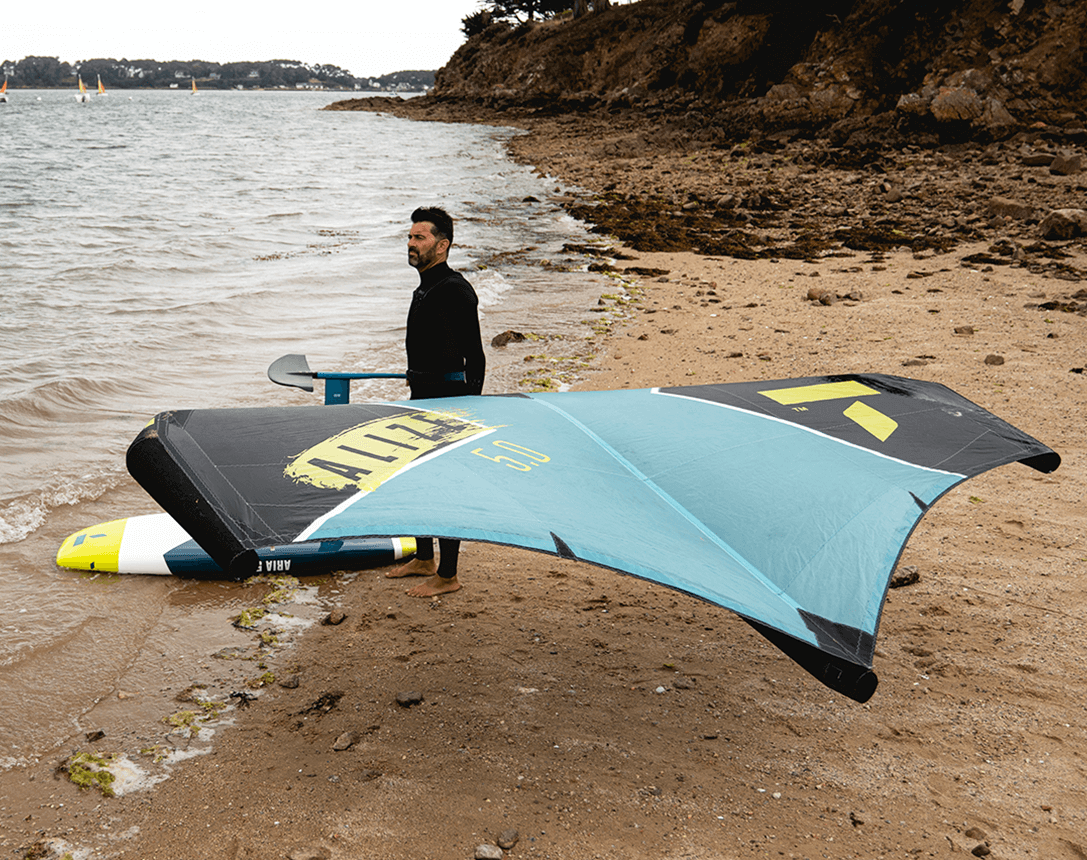
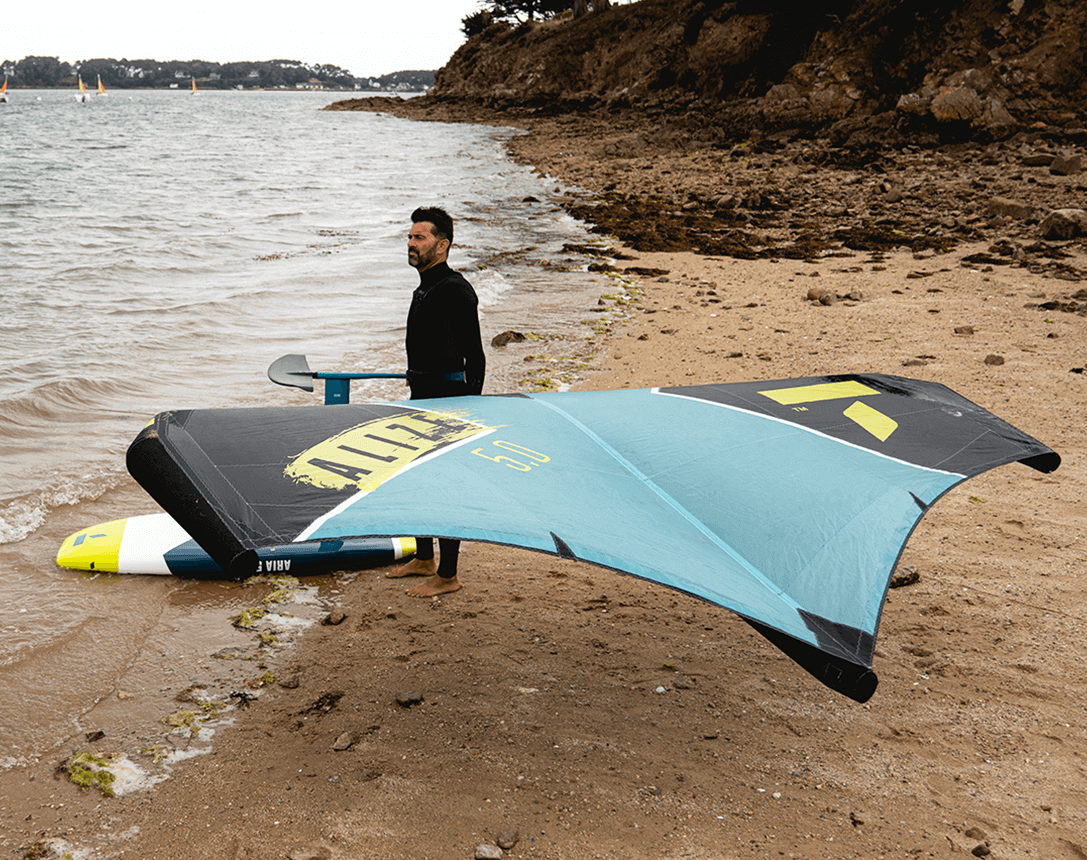
CARRYING YOUR EQUIPMENT
There are a few different ways to carry your TAHE wingfoil equipment to the water’s edge. The simplest and most efficient way is to use one hand to hold the handle on the leading edge of your Alizé wing to lift it up and your other hand to carry your Aria board, using the carry handle built into the board’s hull. Before heading out, you’ll want to do some organizing.
First, position your board on its rail closest to you, nose pointing at the water, with the hull and foil facing into the wind—attach your board leash to your ankle or waist. Once your board leash is attached, you can attach your wing leash to the hand/wrist you will be using to carry the wing. Using this hand, grab the handle on the leading edge of the wing, lift the wing by pushing it forward into the wind, and then move it into a position above your head. The wind flow around it when held in this position will neutralize the power of your Alizé wing allowing you to walk easily.
With your free hand, take hold of the carry handle on the hull of your board, lift the board, and put it securely under your arm. Now you’re ready to make your way to the water!
GETTING ON THE WATER
Once you have everything prepped, you’ll need to find a safe spot to paddle out. Ideally, you’ll want to find a spot with no waves and the wind blowing from one side, parallel with/lengthways along the beach. Put your board down on the water with the foil upwards. Holding the foil fuselage firmly, you can now push the board along as you walk further out.
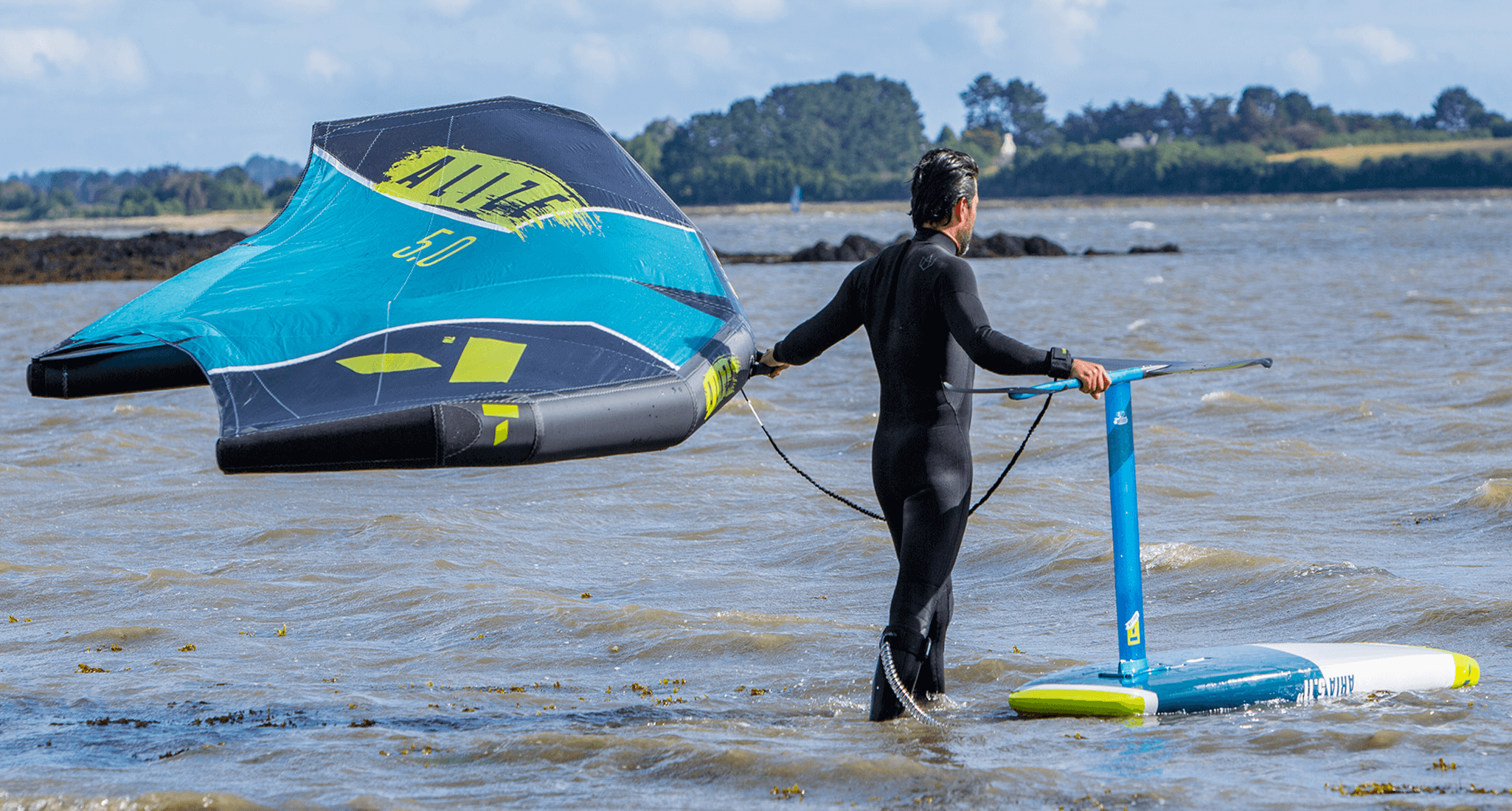
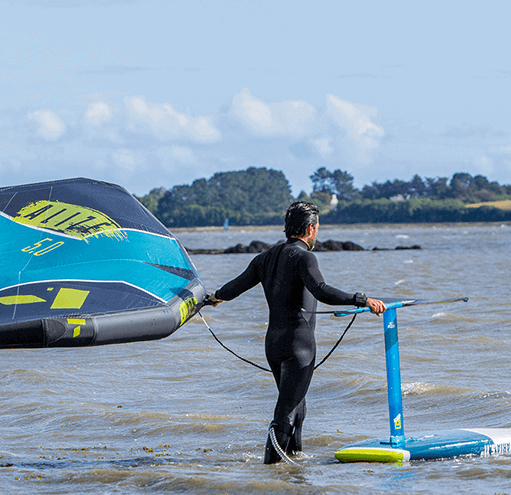
SE METTRE À L'EAU
Vous voici prêt à mettre à l'eau. Idéalement, pour commencer dans de bonnes conditions, trouvez un spot où il n'y a pas de vagues et où le vent souffle de côté, parallèlement à la plage. Posez votre planche dans l'eau avec le foil vers le haut. Maintenez fermement l'ensemble par le fuselage afin de pousser sur votre planche et vous éloigner un peu du rivage.


SE METTRE À L'EAU
Vous voici prêt à mettre à l'eau. Idéalement, pour commencer dans de bonnes conditions, trouvez un spot où il n'y a pas de vagues et où le vent souffle de côté, parallèlement à la plage. Posez votre planche dans l'eau avec le foil vers le haut. Maintenez fermement l'ensemble par le fuselage afin de pousser sur votre planche et vous éloigner un peu du rivage.




IF THE WATER ISN’T DEEP ENOUGH
Keep moving slowly forwards until the water is deep enough for your foil not to touch the bottom when you turn the board over. Turn the board over and point it in the right direction, then ready yourself to get on it in a kneeling position.


IF THE WATER IS DEEP ENOUGH
Still move a little further out from the beach/edge before you think about turning the board over.
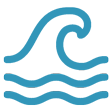

IF THERE ARE SOME WAVES
Keep an eye and a firm grip on your board, making sure it’s pointing towards the waves, to avoid it turning round or over. When each wave arrives, push down and forwards on the foil fuselage, maintaining a firm hold. If the board turns sideways or on its rail/edge, you risk hurting yourself with the foil. When you are kneeling on your Aria board, quickly power up your Alize wing by grabbing the furthest control bar/handle with your rear hand to help you balance.
